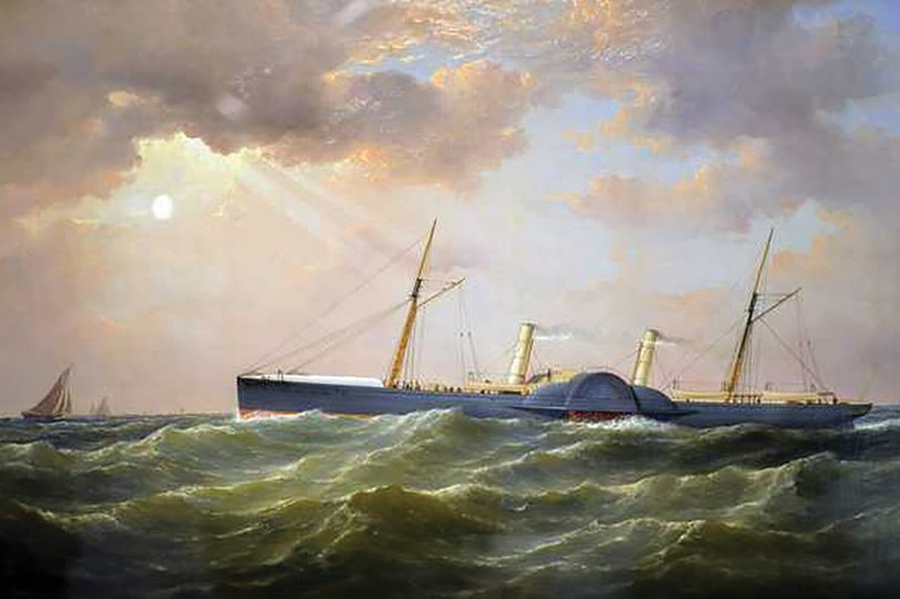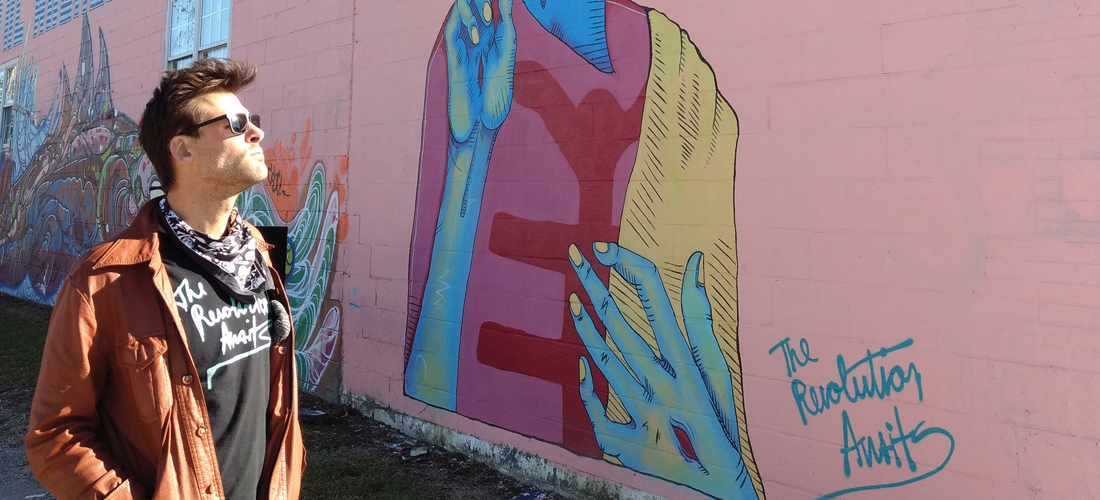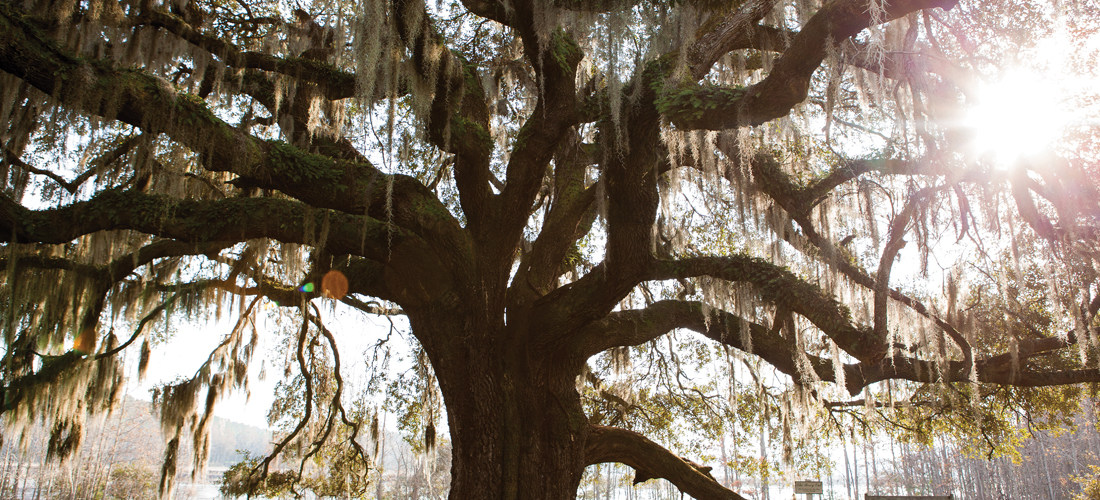Silent Running
Englishman Thomas Taylor’s adventures on the blockade runner
Banshee offer a glimpse into the life of a Civil War thrill-seeker
By Kevin Maurer
It was a moonless night. Dark, but clear. Thomas Taylor searched the inky blackness from the deck of his blockade runner for any sign of a Union vessel.
It was 1863 and the blockade runner Banshee skirted the North Carolina coast as it approached the mouth of the Cape Fear River. The ship, with two steam-driven paddles, was part of a loose collection of blockade runners keeping the Confederacy alive.
Almost 200 blockade runners made it to Confederate ports in 1863. The next year, 244 made it to port, according to R. Thomas Campbell in Last of the Gray Phantoms: The Confederate Blockade Runners.

Taylor was an Englishman employed by Liverpool merchants to act as the supercargo or the owner’s representative on the Banshee. Taylor captured his adventures in an 1896 book. His book, Running the Blockade, offers a glimpse of Civil War-era Wilmington and the importance of Fort Fisher as the protector of the Confederacy’s blockade-running fleet.
Taylor admits early in the book he and other blockade runners were thrill-seekers and adventurers paid handsomely to defy the blockade, not true believers in the Confederate cause.
“Nothing I have ever experienced can compare with it,” Taylor said. “Hunting, pig-sticking, steeple-chasing, big-game shooting, polo — I have done a little of each — all have their thrilling moments, but none can approach running a blockade.”
The English-owned Banshee — the first steel-hulled ship to cross the Atlantic — was built specifically for blockade running. An 1863 New York Times story described the Banshee as a rakish-looking craft, with two pipes: “She sits low in the water, and neither her masts nor any other part of her rises high enough above the water to be seen at a distance, and everything about her seems neat and symmetrical. Like all the other vessels which come from England, she was black on her arrival, but was quickly painted lead color.”
As the Banshee approached the mouth of the Cape Fear, Taylor was joined on the bridge by Jonathan W. Steele, a daring sea captain who believed himself immune from arrest if caught because he was a British citizen, and the ship’s pilot, Tom Burroughs, a Wilmington man who had a sixth sense for spotting blockaders.
Vessels were frequently lost because the pilot lost his nerve or didn’t know his precise location. According to Taylor, Burroughs was a legend.
“He knew his port like his own face, and the most trying situations or heaviest firing could never put him off or disturb his serene self-possession,” Taylor wrote about him. “For all his duties he had an instinct that approached genius. On the blackest night he could always make out a blockader several minutes before anyone else.”
The rest of the crew was crouched next to the ship’s bulwarks scanning the black for signs of Union blockade ships. The hatchways were covered by tarpaulins. No one even lit a cigar. Crew members spoke in whispers. Any sound or light could betray their location.
Running the Union blockage off the coast of North Carolina was delicate work. If the ship was discovered, the Union Navy would imprison the crew and seize the ship and its cargo. Each stroke of the engine and beat of the paddle against the Atlantic Ocean waters put the Banshee crew on edge.
“Better get a cast of the lead, Captain,” Burroughs said to Steele.
The captain grabbed the tube leading to the engine and ordered the engines stopped. Everyone his their breath hoping the engines wouldn’t blow off steam after being stopped abruptly.
“That would have been enough to betray our presence for miles around,” Taylor wrote years later.
A crew member measured the depth of the water from the bow of the ship and reported to the bridge.
“Sixteen fathoms — sandy bottom with black specks.”
Burroughs heard the report and knew his exact location off the North Carolina coast.
“We are not as far in as I thought, Captain,” he said, “and we are too far to the southward. Port two points and go a little faster.”
The blockade was set up in cordons. An in-shore squadron of gunboats anchored during the day, but patrolled at night from shore to shore at the mouth of the river. They could signal to a second cordon of cruisers off shore ready to chase the blockade runners once they cleared the bar. A third cordon of cruisers patrolled the Gulf Stream.
The plan was to sail north of Wilmington and the mouth of the Cape Fear River and then double back along the coast in order to elude the outer ring of the blockade. After sailing along the coast for another hour, the Banshee made the turn.
“Starboard and go ahead easy,” Burroughs said.
Burroughs was known for spotting blockaders before anyone else. The ship crawled along the blacked-out shoreline, its paddles slowly beating the water. Everyone had fallen into the rhythm of the paddle and the engine, when suddenly Burroughs grabbed Taylor’s arm.
“There’s one of them, Mr. Taylor,” he whispered, “on the starboard bow.”
Taylor strained his eyes searching the blackness for a sign of the Union ship.
“All right, Burroughs, I see her,” Steele said. “Starboard a little, steady!”
As the ship turned, Taylor finally made out the ship. It was “a long, low black object on our starboard side, lying perfectly still.” The Banshee snuck by the blockade ship, coming within 100 yards. Once past the ship, Burroughs spotted another.
“Steamer on the port bow.”
“Hard-a-port,” said Steele.
Burroughs spun the wheel and the Banshee turned, avoiding the Union cruiser. Then out of the gloom was a third Union ship. The ship was sailing across the Banshee’s bow.
“Stop her,” said Steele.
The paddles stopped and the Banshee sat dead in the water.
“It was clear there was a false reckoning somewhere, and that instead of rounding the head of the blockading line we were passing through the very centre of it,” he wrote.
There was no choice but to press on. Burroughs told Taylor and Steele the Banshee was likely inside the squadron guarding the mouth of the river.
“Slow ahead,” Steele ordered as the ship continued forward.
Soon the coast came into view. Taylor could see the white foam of the surf. But he could also see the first glimmer of light on the horizon as it was near dawn. Burroughs turned and the Banshee skirted the surf until he spotted “the Big Hill.” The hill was really Fort Fisher’s Mound Battery. It provided the initial point to navigate into New Inlet, and at night, it served as a lighthouse.
Daylight was already breaking. Taylor could make out a half-dozen Union gunboats ahead. Steam shot out of their stacks as they started toward the Banshee.
BOOM.
The gunboats opened fire. Shells splashed around the Banshee.
“An unpleasant sensation when you know you have several tons of gunpowder under your feet,” Taylor wrote.
As the Banshee raced for the mouth of the river, Union gunboats pursued. Then Taylor saw a flash from shore, followed by the boom of a cannon.
A shell whistled over his head.
“It was Fort Fisher, wide awake and warning the gunboats to keep their distance,” Taylor wrote. “With a parting broadside they steamed sulkily out of range, and in half an hour we were safely over the bar.”
The fort stood like a sentinel at the mouth of the river, offering cover to the blockade runners seeking refuge from the blockaders. The fort continued to protect the Cape Fear until January 1865. The fall of Fort Fisher closed the port of Wilmington and was a harbinger of the defeat of the Confederacy.
After clearing quarantine and navigating the Cape Fear River, the Banshee headed for Wilmington. The city was the main point of entry for goods to the Confederate States. Cotton and tobacco were traded for guns, metals, gunpowder and clothing. The goods were taken from the port to railcars and sent throughout the South.
Besides supplies, the ships brought foreign crews, who spent money in the city’s bars and hotels. Wilmington was an international city during the war.
But Taylor was not impressed with what he saw upon arrival.
“Wilmington was already sadly pinched and war-worn,” Taylor said. “There never was too much to eat and drink there, and the commonest luxuries were almost things of the past.”
The ship’s return cargo of cotton was waiting at the dock, and slaves quickly unloaded the gunpowder and other contraband and reloaded the Banshee’s holds with tobacco and stacked three tiers of cotton on the deck.
“Everything had to be done at high pressure, for it was important to get out as quickly as possible, so as to try another run while the dark nights lasted, and loading went merrily on,” Taylor wrote.
To earn some goodwill with local officials, Taylor opened the ship’s doors for lunch. When the lunch bell rang, Taylor said the cabin filled up. It got so crowded, they had overflow seating.
“What a pleasure it was to see them eat and drink!” Taylor writes. “Men who had been accustomed to live on corn-bread and bacon, and to drink nothing but water, appreciated our delicacies; our bottled beer, good brandy, and, on great occasions, our champagne, warmed their hearts towards us.”
They fed so many people, the chief steward’s stores were almost bare by the time the Banshee returned to Nassau. But the luncheons worked and Taylor said when he needed a favor, he got it.
A few days after arriving, the Banshee set off down the river and toward Nassau. Steele and Taylor devised a plan to escape the blockade.
“The flagship during the night remained at anchor, while the other ships moved slowly to and fro upon the inner line, leaving, as was natural enough, a small area round the Admiral’s ship unpatrolled. This was enough for us.”
The Banshee stopped at Fort Fisher. Taylor and Steele rowed ashore to get the exact position of the Union blockaders and get a bead on the flagship — USS Minnesota, a large 60-gun frigate. At nightfall, the Banshee slipped over the bar and headed straight for the USS Minnesota. Passing near the flagship, they escaped the first cordon.
But as the Banshee hit the second cordon, a gunboat spotted the Banshee and fired. Steele ordered full speed from the engines and Burroughs threw the wheel hard over. The Banshee zigzagged away from the slower gunboat. Once they’d put some distance between the vessels, Steele ordered the Banshee to stop.
“As we lay perfectly still, watching the course of the gunboat by the flashes of her guns and by the rockets she was sending up to attract her consorts, we had the satisfaction of seeing her laboring furiously past us and firing wildly into black space,” Taylor wrote.
The Banshee set course for Nassau, spending the next three days running from every sail and patch of smoke on the horizon until they steamed into the harbor on the evening of the third day.
“For my part, I was mightily proud of my first attempt and my baptism of fire,” Taylor said. “Blockade-running seemed the pleasantest and most exhilarating of pastimes.”
Taylor made seven more trips on the Banshee before moving on to other ships. The Banshee was captured en route to Wilmington by the USS Grand Gulf and the Fulton, a transport, on its ninth trip, after a long chase off Cape Hatteras. Steele and the crew were imprisoned and the ship was sold to the Navy and turned into a gunboat.
“We heard afterwards that she had proved anything but a success, being much too tender,” Taylor wrote about the ship’s service with the U.S. Navy.
When Steele was eventually released because he was a British citizen, he returned to Nassau and took command of a new blockade runner built for him.
Steele christened it Banshee No. 2.
Taylor’s career didn’t end with the Banshee. He continued to run several ships and made trips to Wilmington and one to Galveston before the end of the war. He returned to England to a quiet life, but it didn’t stick.
“In a few months I found myself bound for India as a partner in the house in Bombay,” he wrote at the end of the book. “With quite a different life to look forward to.” b
Kevin Maurer is an award-winning journalist who lives in Wilmington. His latest book is American Radical: Inside the World of an Undercover Muslim FBI Agent.


